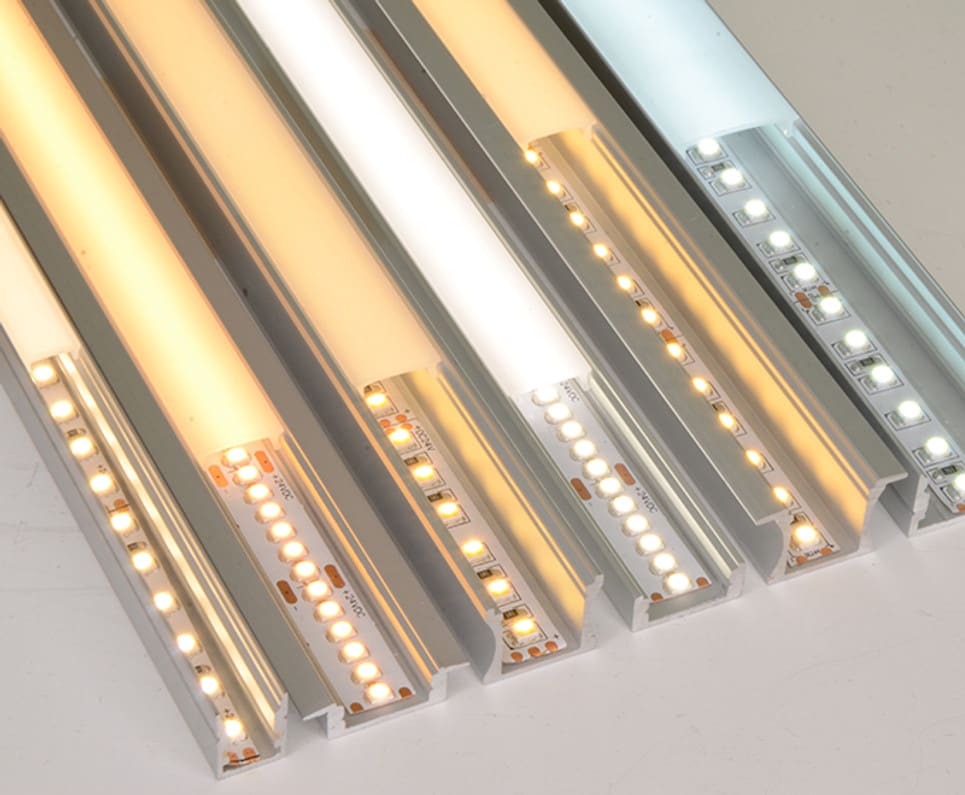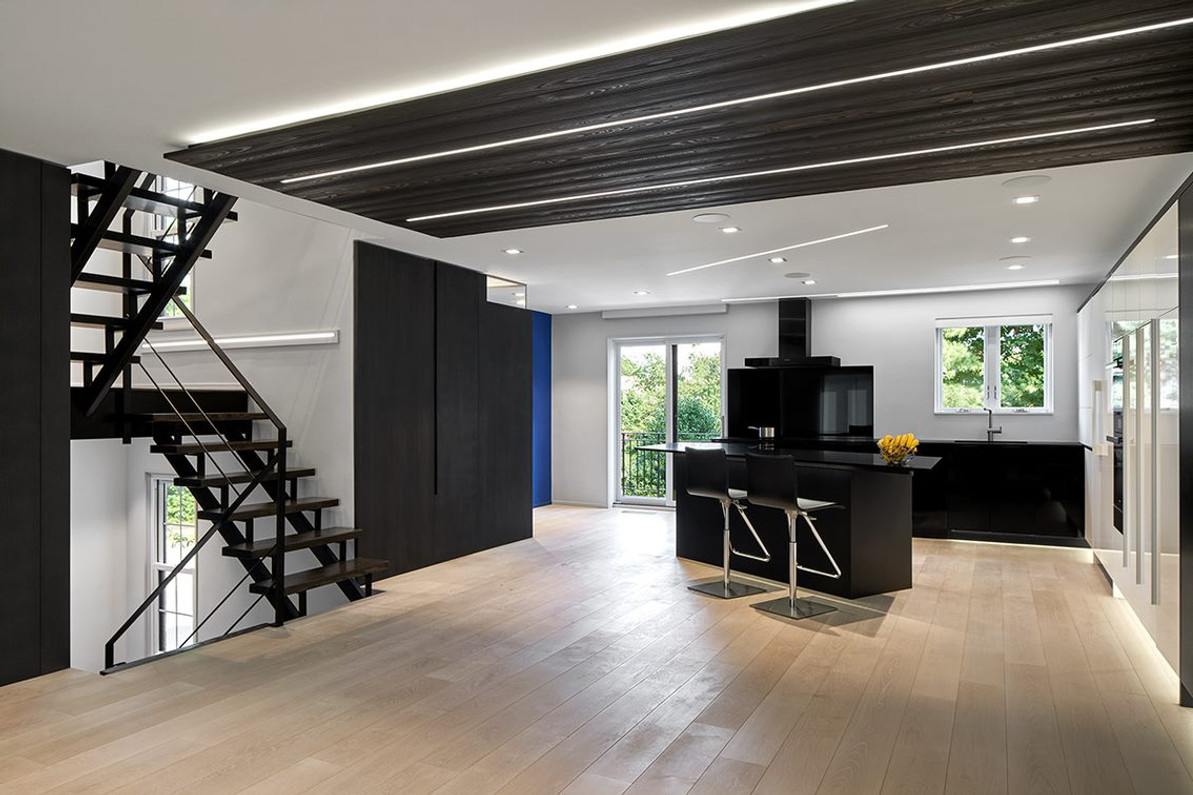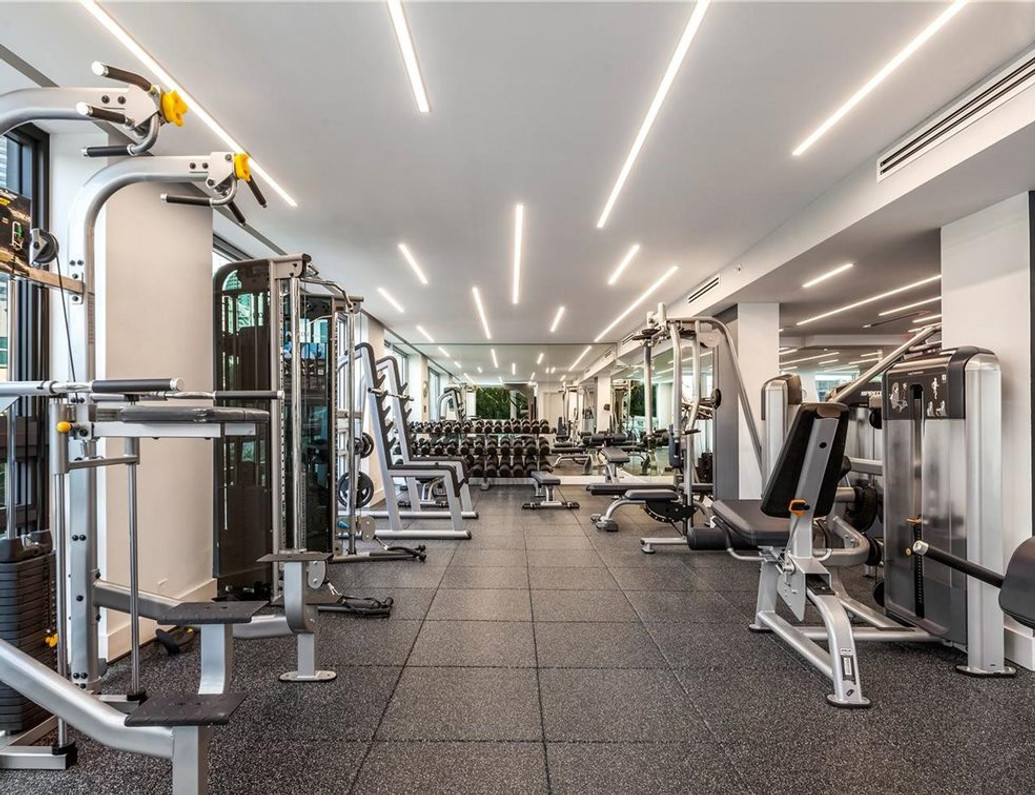Why use an Aluminum Channel for LED Strips
What is an Aluminum Channel for LED Strips?
An aluminum channel for LED strips, also called an aluminum profile or extrusion is a channel that is designed to house flexible LED strip lighting. An LED strip light installed without an aluminum channel is like a plain light-bulb installed in a socket, it needs a cover to make it look aesthetically pleasing! Aluminum Profiles for LED strips can be surface mounted using clips or screws; recess mounted in drywall, millwork, shelving, cabinets, and more; or pendant mounted, also known as suspended, in which the channel is suspended from the ceiling using aircraft cable. Aluminum channels for LED strips typically come with a pair of endcaps, mounting hardware, and a lens or diffuser.
Aesthetic Advantage
Until recently, all LED strips contained multiple point sources of light, these are called LED chips or diodes which are installed onto a flexible PCB making an LED strip light. These point sources of light are not the most aesthetically pleasing light sources to have installed around your space. To diffuser these point sources of ight, and LED strip can be installed inside of an aluminum channel paired with a frosted or white diffuser to get DOTLESS, spot-free LED strip lighting.
Note that the LED Aluminum Channel that you select for your LED strip must be paired correctly to got this dot-free effect. We're proud to have a large inventory of high-density LED strips, and deep LED aluminum channels that can evenly diffuse the linear lighting. There is almost no combination of LED aluminum channel and LED strip light that cannot be made dot-free.
New "Chip-on-Board" or commonly referred to as COB LED strips create uninterrupted lines of light without the need for an LED aluminum channel or diffuser, but when installed bare without an aluminum channel, the COB LED strips do not look aestically pleasing giving an unfinished look. The lifetime of the COB LED strip will also be significantly diminished.
Heat Management
The lifetime of an LED is almost entirely proportional to its junction temperature, which is directly affected by its ambient temperature and heat-sinking properties. In the case of high ambient temperature (sauna lighting, for example), the life time of the LED chip will be diminished by the high ambient temperature of the air inside of the sauna. Conversely, a high output LED strip may generate a considerable amount of heat and without a heat sink this will cause the junction temperature of the LED chip to increase significantly, diminishing the Lifetime of an LED.
The best and easiest way to mitigate this problem is to install your LED strips inside of an aluminum channel. The aluminum channel acts as a powerful heat sink and pulls the heat from the junction point of the LED diode into the aluminum. You might be familiar with the heat-sinks installed on top of CPU's, this is the same principal. Theoretically an LED installed inside of a large enough heat-sink can last upwards of 100 years*, LEDs, have not, however, been around for so verifying this is impossible, however we can say with great confidence that properly managed heat generated from LED's can create a very long lasting and reliable source of lighting.
Recent Posts
-
Why Designers Love Linear Ceiling Lights—And You Will Too!
Jun 17th 2024In interior design, lighting plays an important role in setting the ambience and appearance of a spa … -
LED Linear Lighting Solutions for Commercial Buildings
Jun 14th 2024In commercial lighting, energy efficiency, versatility and durability are key aspects. LED linear li … -
Why use an Aluminum Channel for LED Strips
Aug 12th 2022What is an Aluminum Channel for LED Strips? An aluminum channel for LED strips, also called an al …




